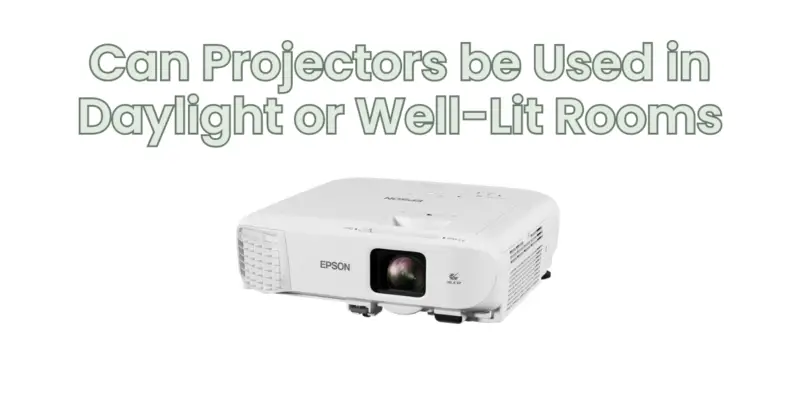Projectors are often associated with darkened rooms or nighttime viewing, but advancements in technology have made it possible to use projectors in daylight or well-lit environments. However, there are important factors to consider when using projectors in such conditions, including projector brightness, screen type, ambient light management, and image quality. In this article, we will explore whether projectors can be effectively used in daylight or well-lit rooms.
- Projector Brightness:
The brightness of a projector, measured in lumens, plays a crucial role in determining its performance in brighter environments. Higher lumen output generally allows projectors to produce brighter images, making them more suitable for use in well-lit spaces. When considering a projector for daylight or well-lit room use, opt for models with higher brightness ratings, typically above 3,000 lumens or more.
- Screen Type and Gain:
The type of projection screen used can significantly impact image visibility in bright environments. Consider screens with higher gain, as they reflect more light back to the viewer, increasing overall brightness. Screens with higher gain can help compensate for ambient light, ensuring better image visibility. Additionally, gray or high-contrast screens are designed to enhance contrast and reduce the impact of ambient light, improving image quality in challenging lighting conditions.
- Ambient Light Management:
Managing ambient light is crucial for a successful projection experience in well-lit rooms. While it may not be possible to completely eliminate all ambient light sources, minimizing direct sunlight, closing curtains or blinds, and dimming artificial lights can significantly improve image visibility. Strategically positioning the projector and screen away from direct light sources or using light-blocking curtains can help minimize ambient light interference.
- Image Quality and Contrast:
The contrast ratio of a projector is an essential factor in image quality, particularly in well-lit environments. Higher contrast ratios enable projectors to produce more vivid and detailed images, allowing for better visibility even in brighter rooms. Look for projectors with higher contrast ratios to ensure that the projected content stands out against ambient light.
- Projection Technology:
Different projection technologies, such as LCD, DLP, or LCoS, have varying performance characteristics when it comes to brightness and image quality. DLP projectors, for example, are known for their high contrast ratios and ability to handle ambient light well. LCD projectors, on the other hand, often offer better color accuracy and can be suitable for rooms with controlled lighting conditions. Consider the strengths and weaknesses of each technology when selecting a projector for daylight or well-lit room use.
- Content Type and Viewing Distance:
The type of content being projected and the viewing distance also impact the visibility of the projected image. Text-heavy presentations or detailed graphics may require higher brightness and contrast to ensure legibility. Similarly, the viewing distance affects perceived image brightness. Consider the intended viewing distance and ensure that the projected image is large enough and bright enough to be comfortably viewed by the audience.
In conclusion, while projectors can be used in daylight or well-lit rooms, several factors need to be considered to ensure an optimal viewing experience. Projector brightness, screen type and gain, ambient light management, image quality, and projection technology all play important roles in determining the visibility and quality of the projected image. By selecting a projector with adequate brightness, using appropriate projection screens, managing ambient light, and optimizing image settings, it is possible to enjoy a satisfying projection experience even in well-lit environments.


